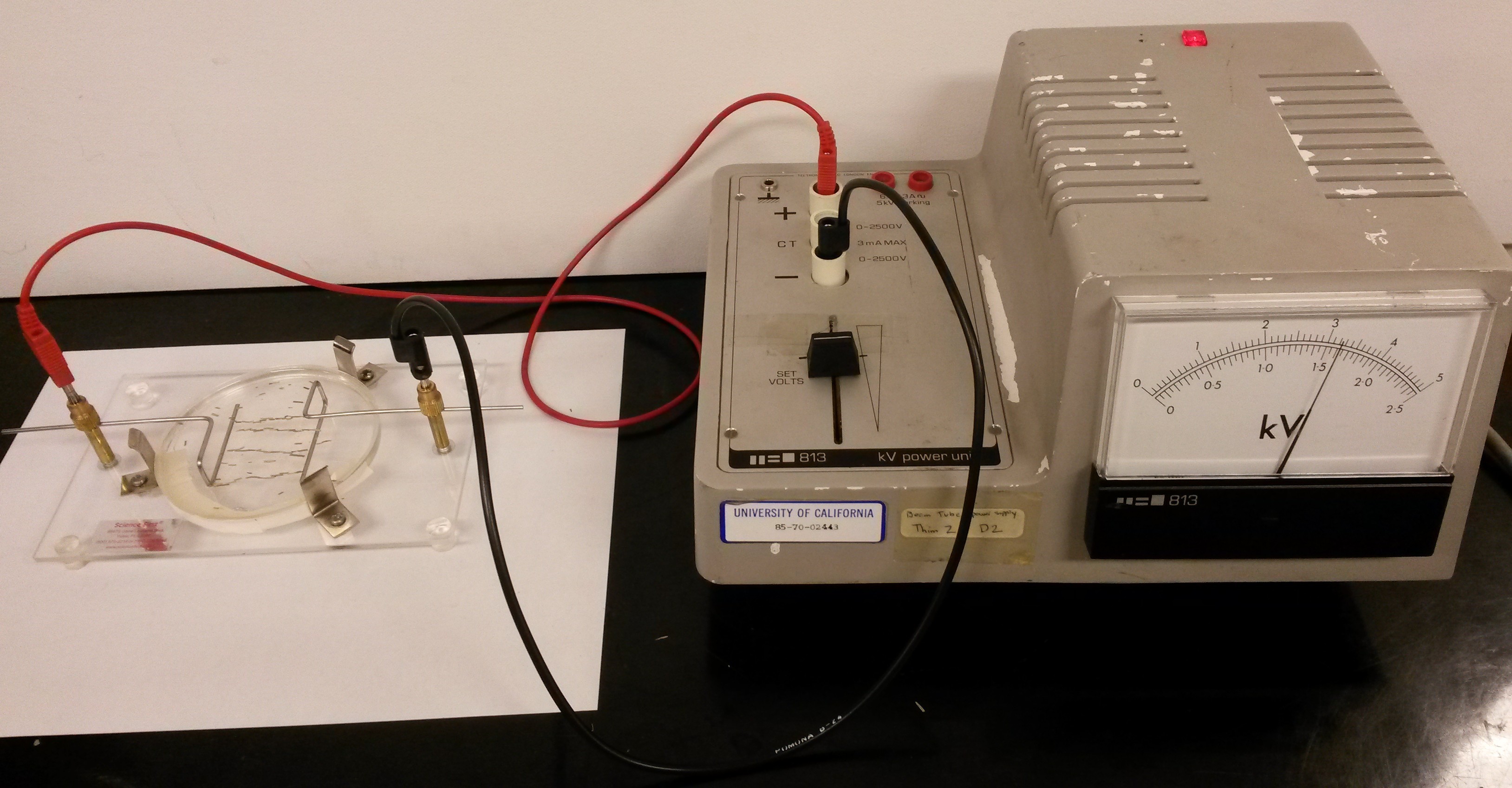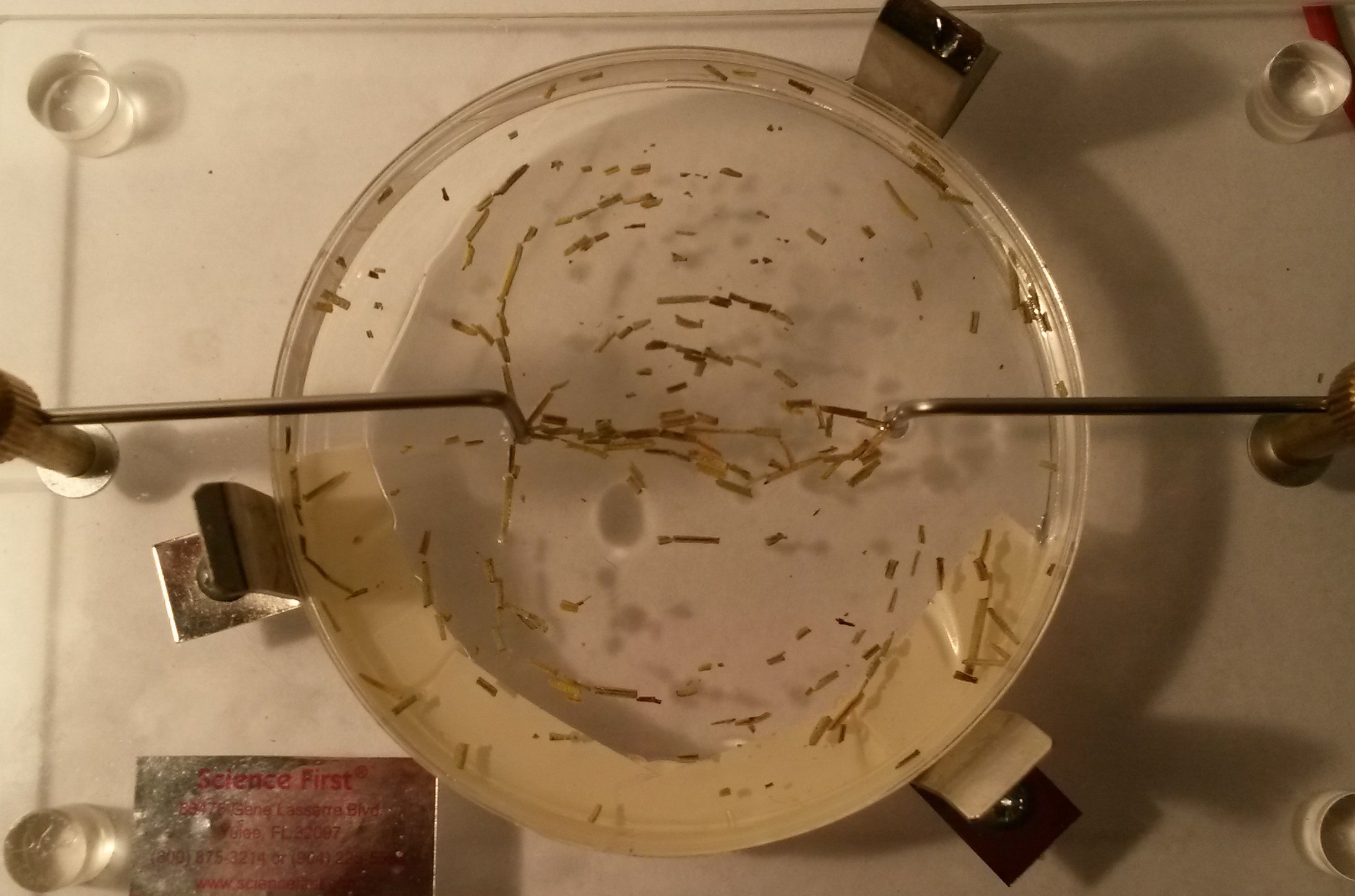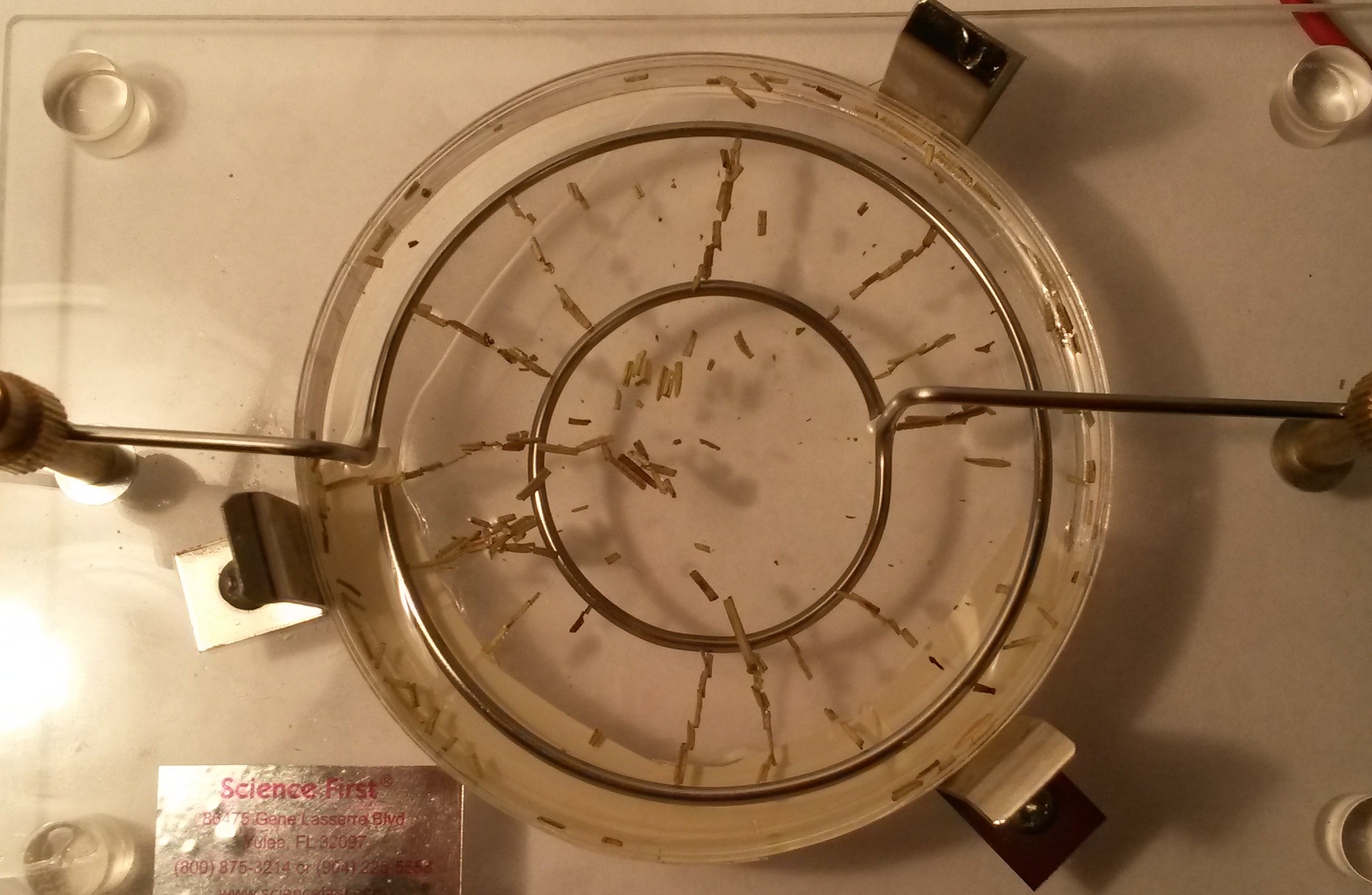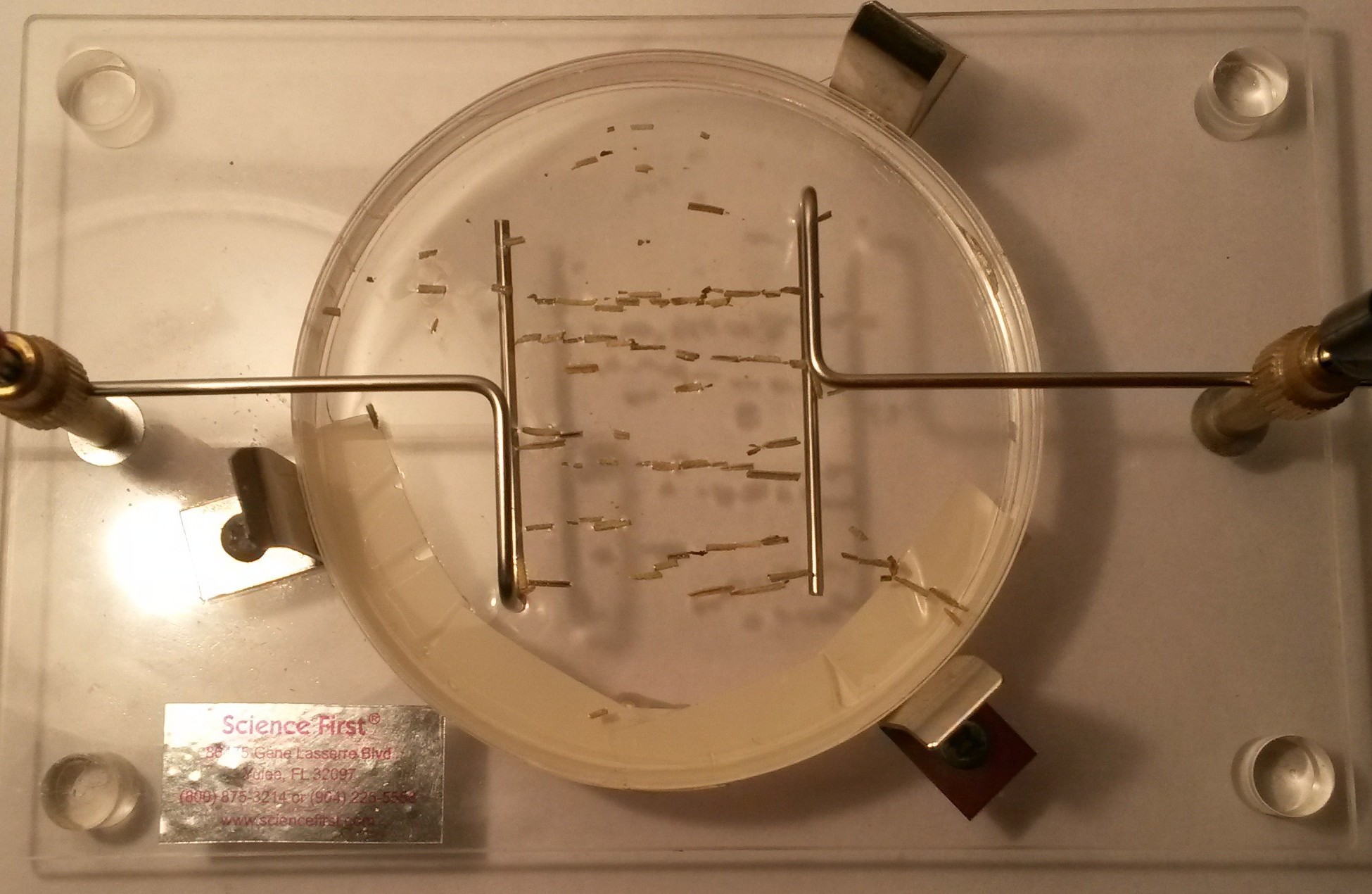This demo will show the lines of an electric field produced by a large voltage (5 kV). Three different configurations of electrodes can be shown: point charges, concentric circles, or parallel plates.
Materials:
- Electric fields apparatus
- 6 different electrodes
- High voltage source (Teltron 813 as shown, or a Van de Graaff generator)
- 2 banana cables
- Wire to connect Van de Graaff to banana cable (if using)
- Vegetable oil
- Rosemary or crushed Rice Krispies
- Towel or washcloth
Demo:
- Put the electrodes in place using the thumbscrews on the apparatus.
- Pour vegetable oil into petri dish until the electrodes are submerged (not too much oil, the electrodes may have to be twisted or bent slightly so that they sit under the oil).
- Crush some rosemary up between your fingers and sprinkle into the oil.
- Hook up one electrode to the “+” jack of the Teltron, and the other to the “-” jack. If using a Van de Graaff, one electrode should be wired to the dome, and the other should be connected to the ground.
- Increase the voltage on the Teltron – you should start seeing effects at 3 kV.
- If you want to swap out different electrodes, be sure to turn OFF the power source before you touch the apparatus.
Explanation:
The potential difference between the two electrodes creates an electric field between them while the viscous oil allows the rosemary to move easily around the dish. The electric field is made visible by the polarized rosemary that rotates to line up with this field. The positive or negative ends of the rosemary are attracted to the positive or negative electrode respectively.
Gauss’s law states that a charge will create an electric field proportional to the distance from the charge. This is best shown by the point electrodes as a lot of rosemary lines are formed close to the electrodes while less lines are formed further away from the electrodes.
The circular electrodes show that there is no field within the center conductor as there is no potential from one end of the inner circle to another. The potential only exists between oppositely charged electrodes. Since there is no potential across this inner circle, there is no electric field and therefore the rosemary does not align.
The parallel plate electrodes show that the field strength is constant from one end of the rod to the other as the lines of rosemary are generally evenly distributed.
Notes:
- Do NOT touch the electrodes when the voltage source is on
- Be sure the electrodes are far enough apart (as shown in pictures). If they are too close together, they will spark!
- Rosemary was found to be good for this demo as it floats on the oil and has an elongated shape. The iron filings included with the demo were too heavy and sank to the bottom.
- Use caution when cleaning the petri dish – it is fragile and has already cracked.
Written by: Finn Amend



